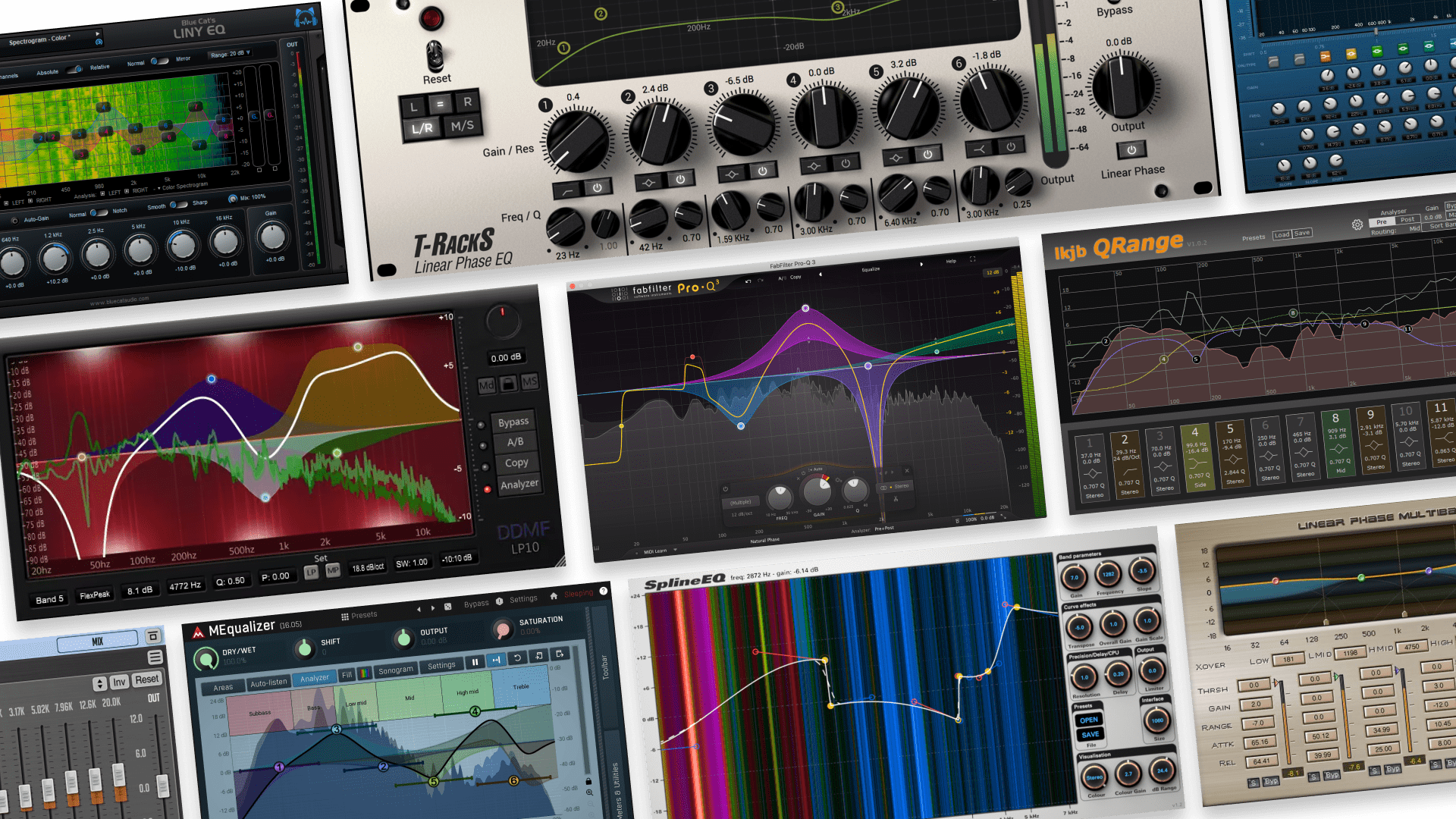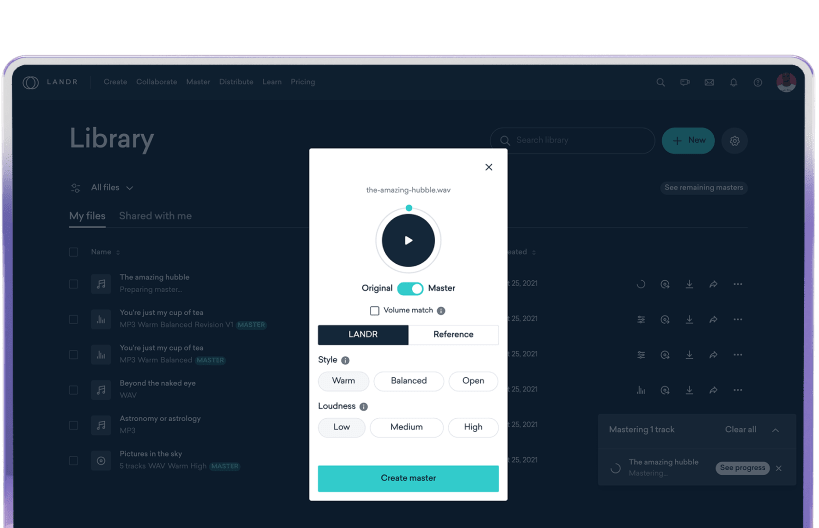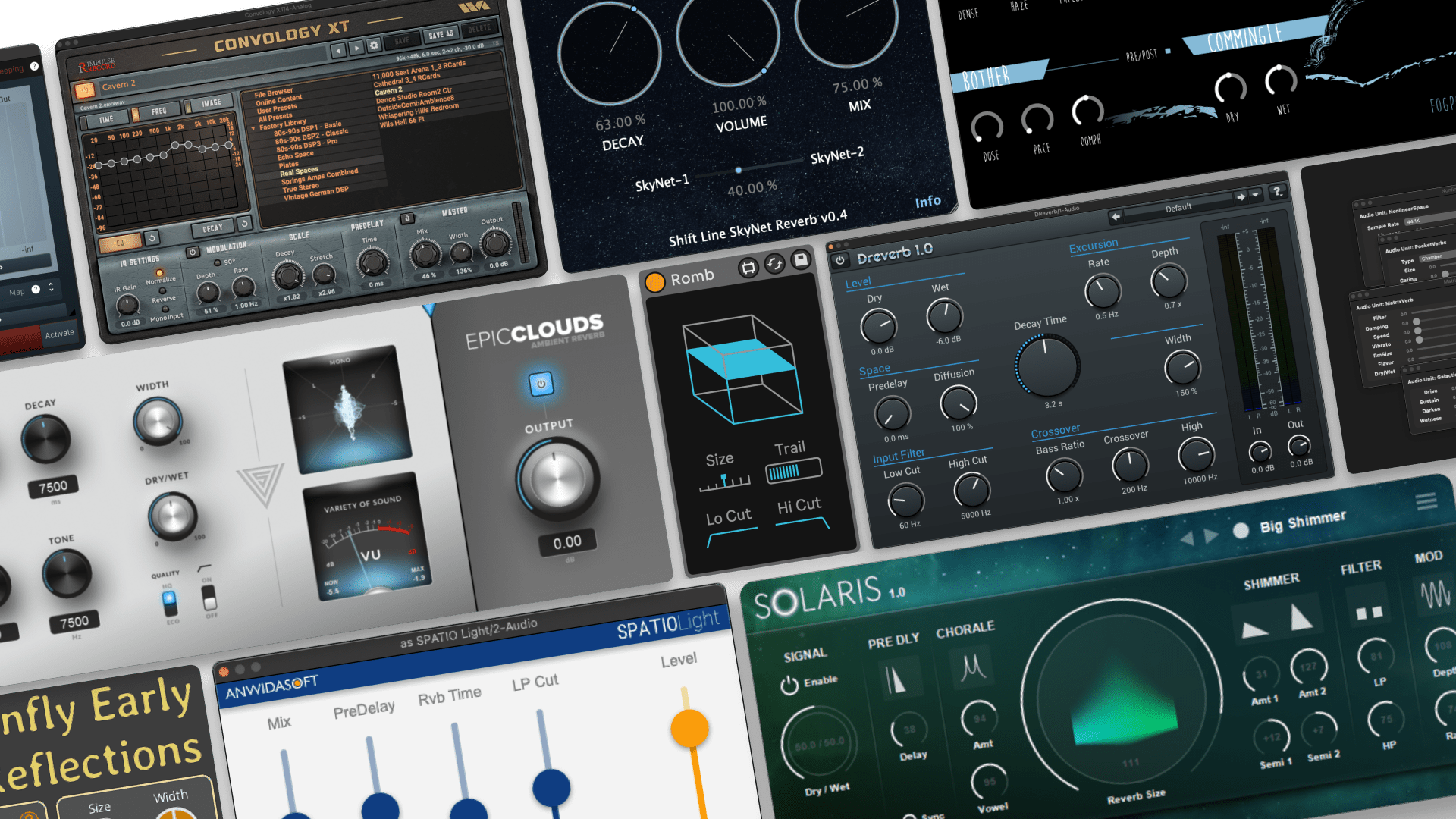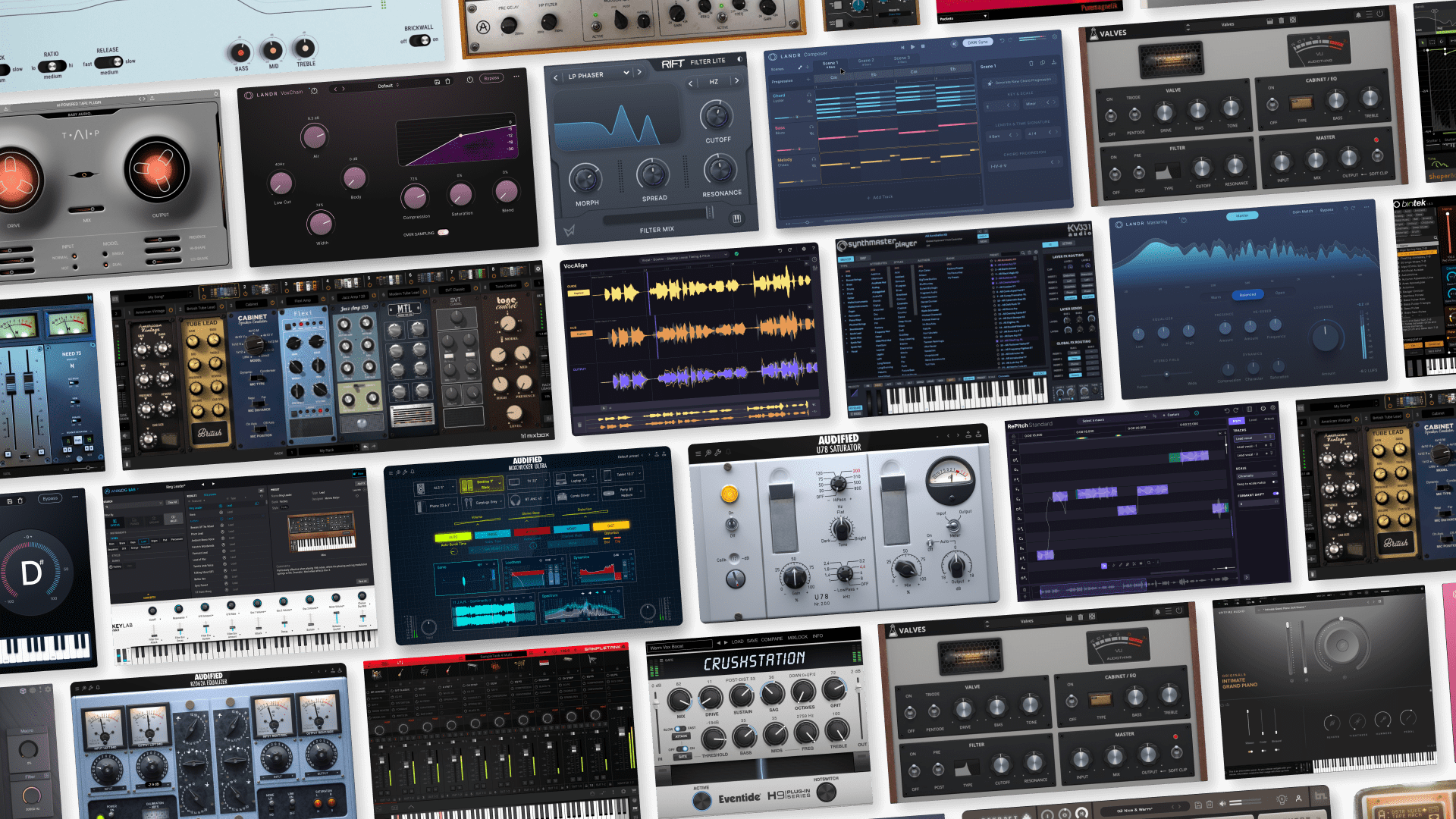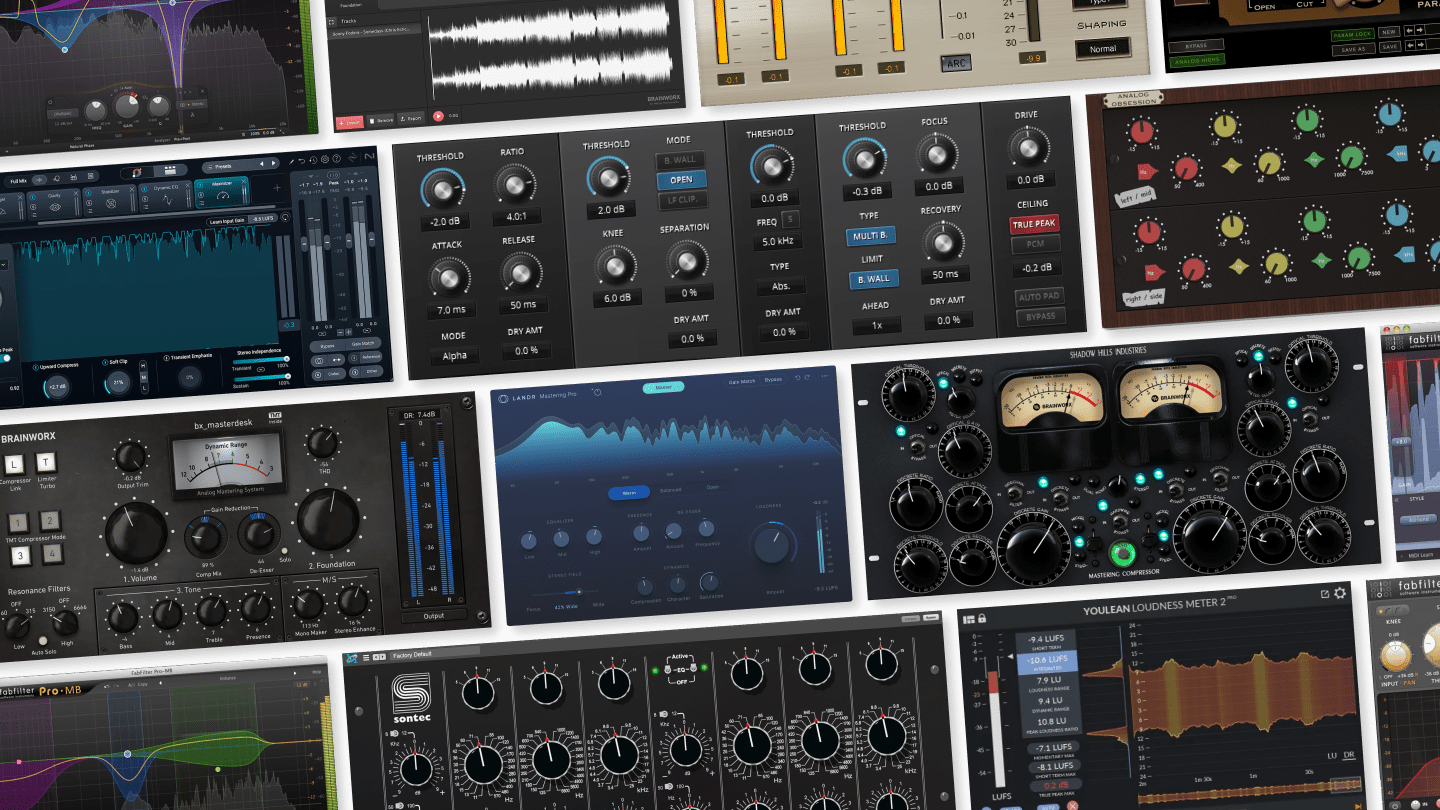
10 Common Mix Problems and How to Fix Them

There are a lot of common mix problems that can take the joy out of making music, especially if you don't know the best way to address them.
Fortunately, a lot of the most common mix problems are pretty straightforward to fix, you just need to keep the right techniques in mind.
This list will run through some of the most frustrating examples and lay out practical solutions that will help you conquer them every time.
Let’s get rolling.
1. Harsh high frequencies
This common mix problem can be the most unpleasant for your listeners, but it can easily go overlooked if you’re not careful.
When you’re working on your music for extended sessions, especially when monitoring loud or on headphones, your ears can get used to higher frequencies. This can make you lose your frame of reference for understanding how bright your sounds need to be.
Meanwhile, high-frequency instrument sounds like hi-hats and cymbals are great for adding energy and establishing groove, but they can cause the high end to build up quickly.
Additionally, you might think that simply rolling off the high end on the master bus will address the issue, but this will more likely just take the life out of your mix.
So, here are a few key tips:
Take breaks when working on your music and be mindful of volume, especially when working on headphones.
Be mindful of your high-frequency instruments. Keep hi-hats, cymbals, and other high-frequency sounds a bit lower in the mix than you think you need, and then bring them up later if absolutely necessary.
Use a de-esser plugin like LANDR VoxDeEss to keep highs smooth in your vocals.
Make EQ adjustments at harsh frequency bands, such as around 2-4 kHz and up, but target carefully instead of simply rolling off the entire high end.
You should also EQ instrument sounds at the source rather than relying on EQ for the master bus.
Use multiband dynamics to reduce specific frequency bands dynamically rather than permanently.
2. Thin or distant vocals
Few things can kill a good song like a lacklustre vocal mix (unless, of course, muddy and inaudible vocals are an important part of your genre).
This common mix problem can be especially frustrating if the vocal performance you have is good, but it’s just not sitting right with the instruments.
The goal for vocals should always be to get them to shine in the right frequency ranges while avoiding harshness like we discussed above.
So, here are some solutions to keep in mind:
Follow proper mic technique for vocals, including proper selection and placement of the mic, use of pop filters, and consistent distancing.
Use EQ to emphasize and tame certain frequency bands. Spend some time dialing in the right levels at 200-300 Hz and 500 Hz to get the mids right.
Use a tape saturation plugin like Baby Audio TAIP to carefully introduce more harmonics to your vocal recordings without adding harsh energy to the highs (avoid disrupting the pitch with wow and flutter unless it’s an intentional stylistic decision).
Add brightness and air with vocal-specific plugins like LANDR FX Voice.
Be mindful of the stereo image in your vocals. Chorus, doubling, and stereo wideners can be fantastic for enhancing vocals, but it’s important to keep the center strong with careful wet/dry blending and parallel processing so that the lyrics and texture don’t get lost in the mix.
3. Elements not glued together
It’s possible for a mixdown to sound pretty good and full, yet somehow lack a sense of “glue” and cohesion between all of the individual elements.
Addressing this common mix problem can be a bit of a balancing act. You want your layers to breathe and respond to one another, but you also don’t want everything to be squashed together to the point where your clarity and separation are compromised.
Here’s what you can consider for this problem:
Apply compression to the master bus, but be sure not to overdo it. You should leave enough time in your attack and release for your transients to breathe while avoiding a high ratio or excessively low threshold. Your goal is to glue, not to squash.
Use tape saturation on the master bus as well, but once again, ease into it so that you can avoid losing your dynamics.
Use sidechaining between various elements in your mix to get them to interact with one another. Don’t forget that you can even sidechain your reverb and delay send channels so that the effects tails respond to your instruments and/or vocals.
You can either sidechain a compressor, which will “duck” the track to the incoming signal, or sidechain an enhancer, which will increase the level of the track in response to an incoming signal. But use these techniques wisely — excessive sidechaining can be a bit fatiguing to the ear.
4. Phase problems
This common mix problem can be especially sneaky. It’s not easy to recognize phase issues in a mixdown unless you test for them in the right way, but they can become more apparent later on when people listen to your mix on certain devices and in certain settings.
Excessive use of stereo imaging processors (as well as more classic stereo effects like reverb, delay, and chorus) can create interference that cancels out some frequency content when the music is played back on a mono speaker or in a club whose system is wired in mono.
Certain EQ practices can also compromise details and transients in your sounds.
Here’s how to address this issue:
Avoid going overboard with stereo widening effects. These can be seductive for making your sounds feel more immersive, but they can introduce problems as they add up.
Avoid using multiple stereo processing effects in series, like following a wide chorus with a wide flanger. A wide stereo effect is often best reserved for the end (or near the end) of a chain, and most modulation effects sound great in mono anyway.
Use sends, dry/wet mix, and parallel processing to keep your dry signals present where needed. Avoid having a bunch of different insert reverbs on different instruments throughout the session.
Use a linear phase EQ if you need to make more steep EQ adjustments, especially when working with drum, percussion, and vocal sounds.
Occasionally monitor your mixdown in mono. This will allow you to preview how your track would sound in a mono-only listening situation and is very handy for learning how certain mixing and effects decisions translate. Your track doesn’t have to sound identical in mono to how it sounds in stereo (it can’t), but as long as the clarity, impact, and balance remains strong, you’re in good shape.
5. Muddy low end
Bass is the bedrock of your track, so it’s important to keep it strong and clear. Unfortunately, it’s especially easy to end up with bass frequencies that interfere with one another.
This common mix problem can mess with the tonality of your basslines, compromise your kicks, and generally make your tracks sound unfinished or uneasy when played on systems with subwoofers.
In a situation like this, you can take these measures:
Think about how you program your kicks and basslines. It can be helpful for your mixdown to avoid overlapping hits between kicks and bass, but this isn’t a hard and fast rule. It’s generally a myth that you should always avoid overlapping kicks and bass, but in certain situations, offsetting them can both help with muddy low end and emphasize your groove better.
Sidechain your bass to your kick. Whenever the kick hits, your bass will duck, and as long as your settings aren’t too extreme, they’ll remain in better balance with one another without competing too much.
EQ your bass and your kick carefully. It isn’t always a good idea to rely entirely on sidechaining, so pay attention to the frequency content of both your kick and bass to understand what elements are competing with one another.
For example, your kick may not need as much low end as you think, and may depend more on emphasis in the mids.
Your bass also may have too much going on outside of the fundamental, so you could reduce non-essential frequencies to avoid masking the kick.
6. Mix feels too busy
Sometimes, when you play back a track, there’s just too much going on. The important elements, like the vocals or the lead instrument, might be getting lost. Or, depending on what’s happening with your drums and percussion, the groove isn’t shining through.
This common mix problem tends to be the result of gradual build-up over time that you don’t notice until later. It’s especially prone to happen if you use a lot of delay, have too many sounds in a similar frequency range that are masking each other, or haven’t been careful with levels and gain staging.
So, you might want to give these a try:
Turn down every channel except for the most essential sounds. Get the balance of those essential elements right, first and foremost.
Then, gradually turn up your other elements, one at a time, only as much as needed to contribute something meaningful to the track. You might even be able to eliminate some elements that you don’t actually need.
Bring down your reverb and/or delay levels. These effects can create long tails that interfere with the foreground of your track, so it’s possible that they just need to be tamed a bit.
Don’t underestimate panning. If you have most of your tracks panned center, this can easily make things feel too dense. This is an especially important consideration for percussion. Try panning certain minor elements (i.e., not your lead vocal, lead instrument, or kicks) at various points to spread things out a bit.
Make use of limiters to control levels on certain elements without turning them down across the board. This is especially useful on elements that don’t depend on super clear transients.
7. Reverb problems
Reverb can either be your best friend or your worst enemy, depending on how you use it.
It can make your tracks more emotive and immersive while enhancing the tones and harmonies of your vocals and other instruments, but it can also get in the way of clarity and cohesion.
Here are a few tips to consider:
Try using less reverb than you think you need. Depending on the genre you’re working in, huge reverbs may be essential. But in other cases, you might be surprised how capable reverb is of providing its benefits even when it’s subtle.
Once again, use effects sends dedicated to your reverbs and avoid having a bunch of different insert reverbs on different instruments throughout the session. It’s often a good idea to limit yourself to one or two reverb buses.
Use EQ on your reverb send to tame build-up in certain frequency bands, especially in the mids. You can also high-pass your reverb sends to mitigate unwanted low frequencies. These techniques are easy to forget when you’re too focused on EQing the sound sources themselves.
Use pre-delay on your reverbs to allow space for your transients to maintain their definition and separation, otherwise they may get lost in the wash.
8. Dull high end
While harsh high end is a very common mix problem, it’s also not uncommon to run into the opposite issue.
In some ways, this can be similar to the problem of harsh high frequencies, such as making sure that your monitoring situation is transparent and reliable. But in other ways, it can catch you off guard.
Whether it’s dull vocals, lack of sharpness in your transients, or an unintentionally degraded, low-quality sound, having inadequate energy and definition in the high end can seriously take the life out of a mixdown.
So, we recommend the following:
Apply a slight high-shelf boost around 8-12 kHz to the appropriate layers of your track, such as your vocals, hi-hats, or cymbals.
Don’t apply the same gain to all of them. Do it as appropriate for each instrument according to how it needs to sit in the mix. And, of course, watch out for harsh resonances.
Apply some high-frequency excitement to the master bus. There are some plugins devoted to this, like the AudioThing Type A and Type B.
If you don’t have these plugins, you can apply parallel saturation with a plugin that allows you to high-pass the wet signal and blend it with the dry. This is essentially what an exciter does, adding new harmonics only to your high end.
9. Drums lack punch
Is there anything more discouraging than weak drums?
Some lo-fi genres make interesting use of soft and low-resolution drum hits, but in most genres, having clarity and punch to your drums is important.
However, it’s also important not to go overboard. It’s a common mistake to try and crank up the punch factor only to make things worse.
Examples of this include using so much compression that the dynamic range gets squashed into oblivion, or using transient shapers, EQs, and exciters so aggressively that the transients become too sharp and fatiguing to the ear.
With all of this in mind, here are some ideas:
Route your drum and percussion to dedicated buses and apply compression to them carefully. This will allow you to focus your control of dynamics on your drums and percussion without affecting other elements.
Make sure you know how to use compression before you use it. We’ve written before about how compression can be used too often, but as long as you understand how it behaves and how it affects your transients, it can be an indispensable tool.
Parallel compression can be very useful. It allows you to blend the compressed signal with the dry signal, helping you keep your dynamics intact while bringing out more punch.
Use transient shapers like LANDR FX Beats and Native Instruments Transient Master to bring out the peaks in your drums.
Use saturation to add harmonics and body to your drum tracks, and experiment with either blending the dry and wet signals or going 100% wet, depending on your needs.
10. Poor translation to other speakers
One of the trickiest common mix problems when finalizing a mixdown is getting it to sound how you want on different playback devices and in different listening settings.
If you find that you’re happy with how things sound in the studio but that it just doesn’t work on other speakers, there are a wide range of factors to keep in mind.
Here are a few of the most important:
Investing in reliable, transparent monitors for your studio setup is essential. It helps you gain a more accurate picture of what’s going on in your mixdown.
Acoustically treating your studio space is also a must. While professional acoustic treatment can be prohibitively expensive, there are ways to diffuse problematic frequency build-up without spending a pretty penny, and we recommend dedicating time to researching that process.
Take notes when you reference your material on multiple types of speakers (headphones, earbuds, car speakers, Bluetooth speakers, etc.). This will help you understand what changes might be needed in levels, panning, and frequency balance.
Take the mastering stage seriously. While you should not rely on the mastering stage to get your mixdown sounding right, it’s still an essential part of making your music sound consistent across systems.
While mastering engineers can certainly be worth the investment, not everyone can afford them, so an intelligent mastering tool like LANDR Mastering may be just what you need to finalize your tracks and get them ready for the world.
Gear guides, tips, tutorials, inspiration and more—delivered weekly.
Keep up with the LANDR Blog.

